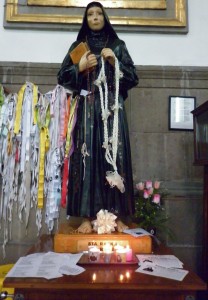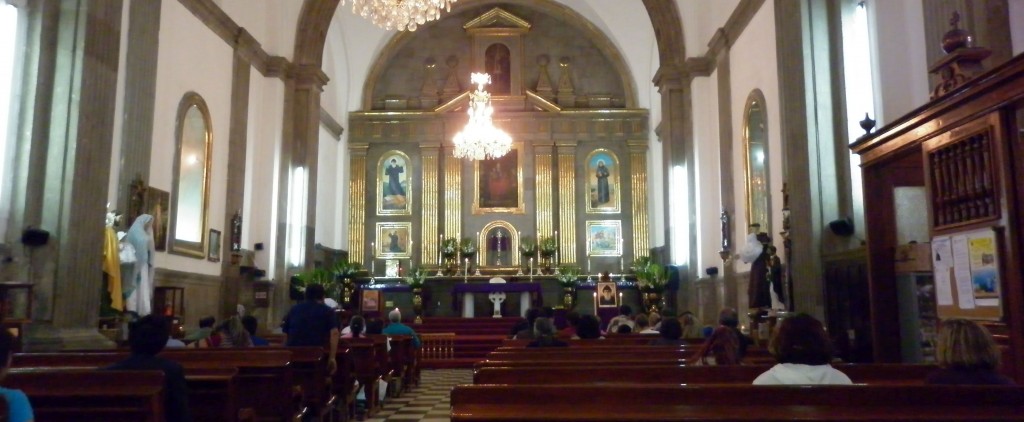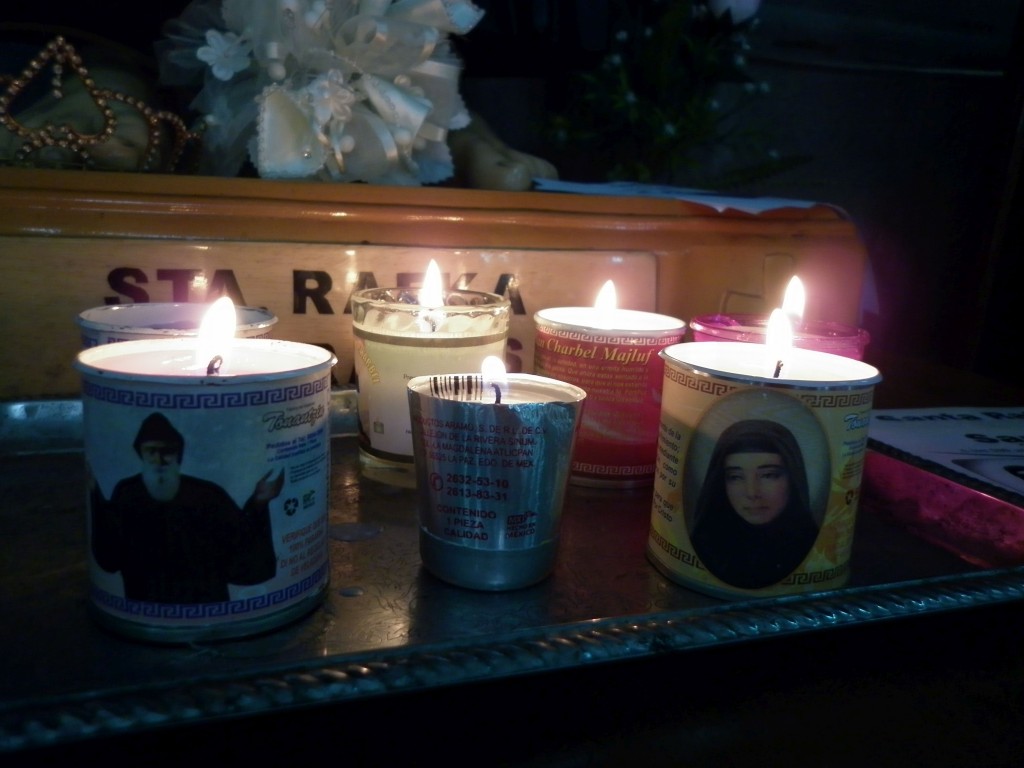“Is that Lebanese?” I think to myself. Because I don’t know Latin that well, but it doesn’t sound like Latin to me, then again my liturgy-recognition skills aren’t what they should be either.
I’m sitting at Mass at the Templo de la Balvanera and the priest has already gone into a few of the differences between the Maronite and Latino Catholic churches – describing them as different branches on the giant tree of Catholicism. The Maronites are sect of Catholics based around Marun, a 4th-century Syriac-Aramean monk venerated as a saint. They were apparently isolated in the Lebanese hills until the crusades came to town and forged a concrete link between them and the Catholic church.
Curiosity brought me to Mass at 4 in the afternoon on a Tuesday, curiosity about the cult of Saint Charbel, that I just read about this morning for the first time while researching information for an article on Lebanese immigrants in Mexico City. Charbel was a Maronite monk and priest who lived as a hermit for 23 years in the Hermitage of Saints Peter and Paul run by the St. Maron monastery in Annaya, outside of Beirut. His body is said to have continued looking fresh for years after his death. He is, for some reason, the patron saint of most Lebanese Catholics in Mexico, and every first Tuesday of the month, special masses are held at the Templo de la Balvanera in his honor. This was March 4, one of those Tuesdays.
Father Alizar is direct from Lebanon and has a thick accent when speaking Spanish, making it even harder for me to understand what he’s saying. That and the noise that rages outside the doors of the church in the La Merced neighborhood are enough to make even the reluctantly pious scoot up a few pews. Several giant statues of Saint Charbel are draped in ribbons with his name printed on them along the wall of the sanctuary, and another statue of Santa Rafka (Rebecca) is also surrounded by candles and ribbons.
Saint Rafka apparently prayed to God asking him why he had abandoned her and  never sent her any kind of sickness and from that moment on she was beset by excruciating pain the rest of her life from various ailments, starting with her eyes shriveling up in their sockets. I suppose there’s no backsies with God the Father. The 12 o’clock Mass was specifically dedicated to the sick and infirm.
never sent her any kind of sickness and from that moment on she was beset by excruciating pain the rest of her life from various ailments, starting with her eyes shriveling up in their sockets. I suppose there’s no backsies with God the Father. The 12 o’clock Mass was specifically dedicated to the sick and infirm.
The service gets interesting as Father Alizar pulls a random girl up out of the audience to read the story of Noah. She is clearly nervous and stumbles over the words. He simply says “The people must be involved in the Mass.” He also starts to sing in that unrecognizable language I mentioned earlier. Turns out it’s Aramaic, the language of Lebanon once upon a time and the original language spoken by Jesus and the disciples. The priest explains that a little bit too, just like he explained about the branches of the Catholic church earlier, which I appreciate, even though I seem to be the only person in the room that might be confused as to what’s going on. He also turns his back to the audience on various occasions to face the cross, which I’m told later is a specific part of the Maronite service.
The church was once affiliated with the adjoining Jesús de la Penitencia convent which was specifically oriented towards Spanish women who had worked as prostitutes, repented, and now wished to live a life for God. La Merced is famous for its houses of ill repute as the city’s commercial center and one of the first landing spots for immigrants coming to Mexico after the Spanish conquest. The convent was torn down, and the prostitutes still abound.
 I can’t convince myself to go up and take communion, feeling that somehow Padre Elizar will know I’m not Catholic and just wave me through, calling me out to the other parishioners. So I simply sneak out while the line is forming and buy myself a bottle of “San Charbel Healing Water” – conveniently distributed by e-pura. I figure it’s kind of the same thing.
I can’t convince myself to go up and take communion, feeling that somehow Padre Elizar will know I’m not Catholic and just wave me through, calling me out to the other parishioners. So I simply sneak out while the line is forming and buy myself a bottle of “San Charbel Healing Water” – conveniently distributed by e-pura. I figure it’s kind of the same thing.
Click here to subscribe via RSS


